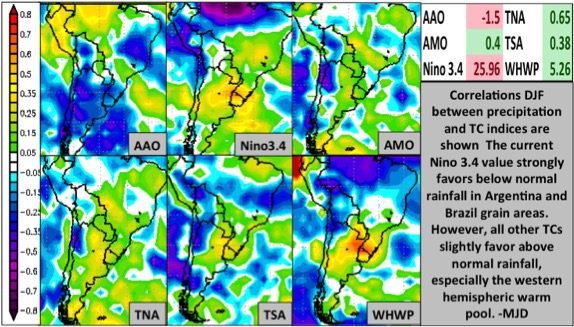A brief look at the current conditions hint at a better outlook than most La Nina years. The connection between La Nina and poor grain yields in South America is well documented. However, correlations show that a warm Atlantic and a -AAO compete with this precipitation regime. It appears that Atlantic sea surface temperature influence, AAO and others are dominating, with above normal rainfall forecasted over the next few weeks. Argentina’s soybean areas in Cordoba & Buenos Aires, will gain from this much needed rainfall, after a drier start to the season. These teleconnection values from November (coupled with the fact that this year’s La Nina Modaki is weak at best) lead us to downplay South American problems in the coming season.


